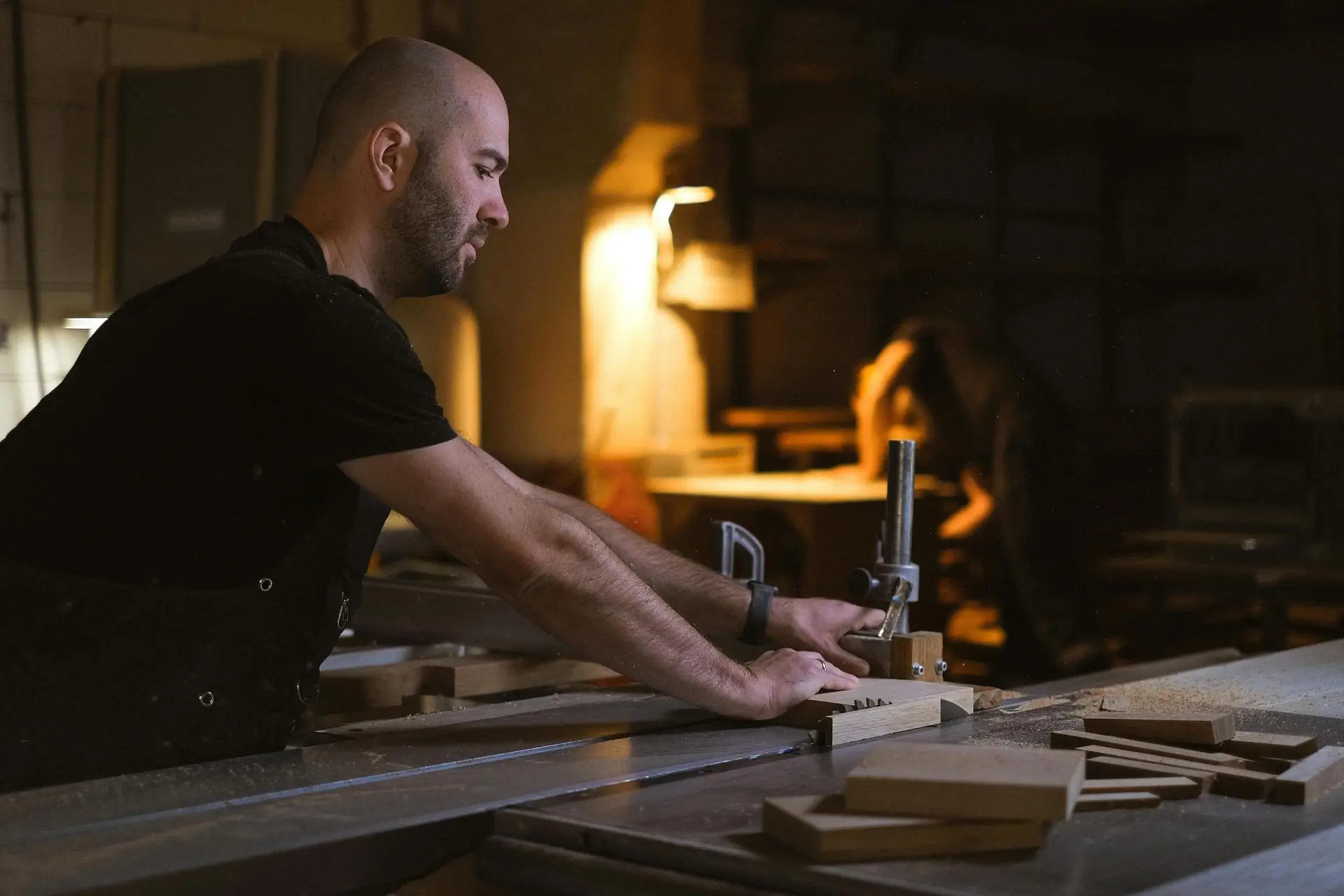A Comprehensive Guide to Preserving and Caring for Your Joinery Wooden Furniture in 2024
Wooden furniture epitomizes elegance and warmth in home décor, woven into the very fabric of our living spaces. Its timeless beauty not only enhances aesthetic appeal but also adds significant value to a home. However, this value is often contingent on proper maintenance and care, which are pivotal for ensuring the longevity of such investment pieces. One essential aspect of wooden furniture construction is joinery, referring to the techniques used to connect pieces of wood together. This article will delve into expert tips for maintaining and caring for your joinery wooden furniture in 2024, ensuring its beauty endures for generations.
The Art of Joinery: Understanding Its Role in Furniture
A. What is Joinery?
Joinery serves as the backbone of wooden furniture construction, comprising various methods through which wooden components are connected. Techniques range from dovetail joints to mortise-and-tenon and dowel joints, each with its unique characteristics. The choice of joinery impacts not just the aesthetic appeal of the furniture but, importantly, its structural integrity and ability to withstand the rigors of daily use.
B. The Significance of Joinery Quality
The quality of joinery directly influences the durability and stability of wooden furniture. A well-executed joint can enhance the resilience of a piece against wear over time, while poor joinery might lead to premature failure, requiring more frequent repairs and maintenance. Different types of joinery may also necessitate specific care practices; for example, furniture with more complex joints might demand additional attention to ensure they remain robust.
Essential Maintenance Practices for Your Wooden Furnishings
A. Keeping It Clean
Regular cleaning is key to preserving the luster of wooden furniture. Use soft, lint-free cloths or microfiber dusters to remove dust. When it’s time for deeper cleaning, a mixture of mild soap and water can be used; simply dampen a cloth, ensuring it is not overly wet, and wipe down surfaces. Avoid harsh chemicals, which can strip the wood of its natural oils.
B. The Art of Polishing and Finishing
Using a suitable furniture polish is crucial in maintaining the sheen of wooden surfaces. Opt for products specifically designed for wood to ensure compatibility with the existing finish. When applying polish, utilize a soft cloth and apply in the direction of the wood grain to prevent scratches, and always follow the manufacturer's recommendations for frequency and application methods.
C. Regular Inspections for Damage
Periodically inspect wooden furniture for signs of wear and tear. Look out for loose joints, scratches, and signs of warping or discoloration. Early detection of these issues can prevent larger problems down the line. It is advisable to consult with professionals when significant repairs are needed, ensuring that the integrity of the joinery is preserved during the repair process.
Smart Protection Strategies for Wooden Furniture
A. The Importance of Coasters and Pads
Protective measures are essential for preventing damage from heat and moisture. Always use coasters for beverages and placemats for hot dishes to safeguard surfaces. Rubber pads under items like vases can also help prevent scratches and indentations.
B. Shielding from Sunlight
It is vital to avoid prolonged exposure to direct sunlight, which can fade and damage wooden surfaces. Position furniture strategically, away from windows or consider using sheer curtains. Additionally, UV protection treatments can help mitigate the adverse effects of sunlight.
C. Climate Control for Optimal Preservation
Maintaining the right environment for wooden furniture is crucial. Ideally, wooden furniture should be kept in spaces where temperature remains between 60-80 degrees Fahrenheit and humidity levels hover around 40-60%. Employing humidifiers in dry seasons or dehumidifiers in humid conditions can help regulate the environment and maintain the integrity of the wood and its joinery.
Comprehensive Cleaning and Restoration Techniques
A. Deep Cleaning Your Wooden Furniture
For a thorough deep clean, follow a systematic approach. First, dust the piece to remove surface debris, then mix a cleaning solution free from harsh chemicals. Lightly dampen a cloth and clean the surface, ensuring no excess moisture seeps into the wood. Rinse with clean water on another cloth, then dry thoroughly to prevent water damage.
B. Repairing Scratches and Dents
Minor scratches can often be fixed at home using home remedies like walnuts or furniture markers designed to conceal blemishes. For deeper dents or gouges, consider using wood filler or consult professionals who specialize in restoration for intricate repairs that may affect the joinery.
C. Refinishing When Necessary
Refinishing is an option should the furniture's finish become dull or worn. Signs that refinishing is necessary include extensive scratches, stains, or fading in color. Homeowners can attempt DIY refinishing but should consider the benefits of professional services, especially for heirloom pieces that require expert care.
Seasonal Considerations for Optimal Maintenance
A. Tailoring Care for Each Season
Different seasons present unique challenges for wooden furniture. In winter, the dry air can lead to cracking, while summer humidity can cause warping. Adjust cleaning routines and protective measures according to seasonal changes, ensuring the temperature and humidity are consistently regulated.
B. Storing Wooden Furniture Effectively
For those instances when wooden furniture needs to be stored, proper preparation is vital. Clean it thoroughly, apply a protective finish, and wrap each piece in breathable material to guard against dust and moisture. Use furniture pads to cushion surfaces and prevent scratches during transportation or in storage.
Maintaining the beauty and functionality of wooden furniture, especially those crafted with exquisite joinery, demands attention and care. By implementing these expert tips, owners can ensure their furniture remains a cherished anchor in their homes, embodying both elegance and practicality for years to come. Embracing proper maintenance practices not only showcases the timeless beauty of wooden furniture but also preserves its integrity for future generations to enjoy.








